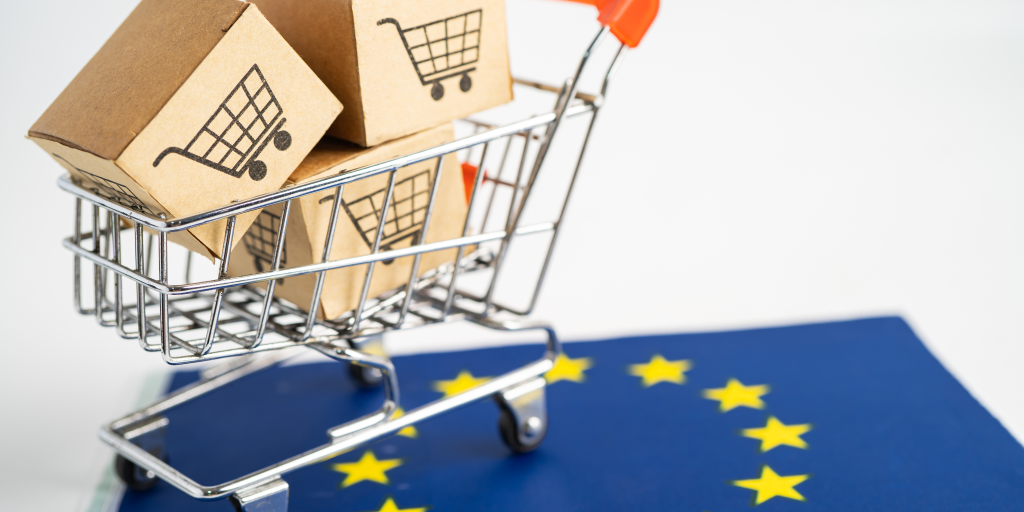The GPSR has tightened the EU’s product safety regulations, making it more challenging for online retailers to meet the Union’s compliance requirements.
The regulation expands the responsibilities of all economic operators for the safety of the products entering the EU markets to ensure that only safe products can reach consumers.
In addition to vouching for the product’s safety, manufacturers, distributors, and importers are also responsible for removing unsafe products from the market.
However, under the GPSR, manufacturers and online sellers don’t share the same responsibilities during a product recall process.
These responsibilities can seem daunting to online sellers unfamiliar with the EU’s new product safety regulation, so in this article, we’ll explain the entire process to help you navigate it smoothly.
The scope of the GPSR and the responsibilities of economic operators

The end of 2024 was a turning point in the EU’s approach to consumer safety.
The Union’s new product safety regulation is a harmonization legislation that introduces stricter safety standards for consumer products entering the online or offline marketplaces in the member states and the European Economic Area.
The legislation increases the responsibilities of all economic operators for the safety of the products they make available on EU markets and compels them to collaborate with market surveillance authorities.
Hence, providers of online marketplaces, manufacturers of consumer products, and distributors must adhere to the stringent compliance requirements.
These requirements range from conducting internal risk assessments to appointing an EU Responsible Person and ensuring product listings on online marketplaces contain the mandatory information.
Moreover, economic operators are also responsible for removing dangerous products with adverse health consequences from the market. Their responsibilities and the steps they must take during a product recall depend on their position in the supply chain.

Download our free eBook to learn more about GPSR!
What is a product recall?

Under the GPSR, all unsafe products sold on a marketplace in the EU must be removed from the market to prevent further harm to consumers, and economic operators who make these products available to consumers are subject to hefty fines.
So, if a harmful product or service has already reached consumers, economic operators, including distributors, must take action to retrieve it from consumers and remove it from the market.
The corrective action economic operators must take involves much more than simply retrieving the product from affected consumers, as the GPSR also mandates that an economic operator must offer a remedy, inform other consumers, and market surveillance authorities.
Still, the exact sequence of actions during the product recall will depend on your company’s role in the production chain.
For instance, online sellers who only sell items they purchase directly from the manufacturer or importer must share with them any information regarding accidents or safety issues caused by those items.
Moreover, they must inform the market surveillance authorities through the Safety Business Gateway portal even if the item’s manufacturer, importer, or authorized representative hasn’t done so.
It’s also important to note that a supervising authority can issue a forced recall if it determines that a product doesn’t follow the EU’s labeling requirements or if its technical documentation lacks instructions in the market’s language on how to use a product safely.
The difference between product recall and product withdrawal

The term product recall refers to products that have already been made available to consumers by an economic operator.
As noted, the process involves retrieving the product from consumers who purchased it, stopping its sales, and sharing information about its potential hazards with all parties involved.
On the other hand, product withdrawal is the process of preventing a product that has already left the manufacturer’s facilities from reaching the consumers.
In either case, manufacturers, distributors, and importers must either recall or withdraw a product from the market if they have reason to believe it is harmful to consumers. That’s why collaboration between stakeholders is necessary to manage the product recall process effectively.
For example, an item’s distributor may opt to stop featuring a product in their online store due to a handful of complaints they received from customers. Still, the manufacturer may find these complaints insufficient to recall the product from the market.
Disagreements like these can disrupt the supply chain, damage the manufacturer’s reputation, and lead to substantial fines.
To avoid similar situations, online sellers should establish internal protocols for communication with other stakeholders, product risk assessment, and product withdrawals or recalls.
The responsibilities of online sellers in the event of a product recall

Economic operators play different roles in the product recall process.
For instance, providers of online marketplaces must cooperate with market surveillance authorities, remove all listings of harmful products from their platform, and inform consumers about all recalled products purchased through their platform.
On the other hand, sellers on those online marketplaces are also responsible for checking the legitimacy of reported accidents and complaints and providing remedies to consumers who have already purchased an unsafe product.
GPSR assigns the manufacturer the primary responsibility for managing the product recall process, meaning that online sellers who produce the items they offer on European marketplaces must handle the entire process.
Let’s take a closer look at the responsibilities of online sellers in the event of a product recall.
Determining your position in the supply chain
Product safety regulation establishes a clear guideline for determining an economic operator’s position in the supply chain. So, according to the document, the distributor is:
Any natural or legal person in the supply chain, other than the manufacturer or the importer, who makes a product available on the market.
Still, a distributor can assume the responsibilities of a manufacturer if they significantly modify a product, or they can be considered an importer if they place a product on an EU marketplace that was previously unavailable on that market.
That’s why understanding your business’s position within the supply chain is paramount for planning the appropriate course of action during a product recall.
Gathering evidence
Online sellers must ascertain the legitimacy of complaints regarding accidents or safety hazards caused by products they sell in their stores.
Keep in mind that consumers can file complaints directly to market surveillance authorities, which is why you should investigate each claim.
Find out the product’s model, serial number, or other product identifier, batch number, and production date.
Then, request from the customer who filed the complaint to provide you with an extensive description of the accident and, if possible, photos or videos of the damage the product has caused.
What’s more, you should add each complaint you receive to your business’s internal complaint register and keep it for at least five years.
Informing the stakeholders
Once you’ve gathered sufficient evidence that the customer’s claim is legitimate and concluded that a product you placed on the EU market is unsafe, you should contact the manufacturer, the importer, or the authorized representative.
They should provide instructions regarding further steps in the product recall process. However, if they don’t, you can inform the market surveillance authority, issue a recall notice, and notify the consumers that the item isn’t safe.
Drafting a recall notice and issuing safety alerts
Article 36 of the GPSR offers detailed guidelines that economic operators must follow when creating a recall notice in written form.
Here’s the overview of the elements a recall notice should include:
- Phrase ‘Product safety recall’ in the document’s title
- A detailed description of the recalled product, including:
- The item’s brand name, name, and picture.
- Serial number or other product identifiers, and graphical instructions regarding their location on the item.
- Information regarding the location and entity that sold the recalled item.
- The full description of the hazard the item has caused. Economic operators must refrain from using phrasing in the recall notice in such a way that may diminish the consumer’s perception of the risk.
- The list of actions consumers should take, and the instruction to stop using the product immediately.
- The list of remedies available to consumers.
- A free infoline where consumers can get further information about the recall in an official EU language.
It’s also worth remembering that the recall notice should be in the language most consumers on a particular EU market understand.
In addition to sending the recall notice directly to the affected customers, distributors should also make the document available on their social media to ensure that it reaches as many potential consumers as possible.
Offering a remedy
Aside from informing consumers about a product recall via e-mail or other means of electronic communication, online sellers must also provide them with a remedy. The GPSR mandates that an economic operator must offer at least two out of the three remedies below:
- Repair the item
- Offer a full refund
- Provide the replacement item with similar functionality and value.
The regulation also indicates that an economic operator can offer just one remedy to consumers if other remedies would imply a significant inconvenience for the consumer or require the economic operator to sustain disproportionate costs.
Furthermore, consumers shouldn’t bear the shipping costs if they opt to repair or replace a product. The economic operator must offer to dispose of the unsafe product on the consumer’s behalf if they cannot do so safely and easily.
Removing the product from the market
You should stop the distribution of a product as soon as you determine it may be unsafe for consumers. Alternatively, you can temporarily pause the product’s sales during the recall process and resume selling it afterward if possible.
Failing to remove an item that doesn’t comply with the EU’s product safety regulations from the market can have far-reaching consequences for the seller’s brand, because it may erode consumer trust, lead to fines, and potential legal action.
That’s why sellers on online marketplaces should establish a product recall action plan that serves as a guideline for managing this process and helps them minimize the reputational and financial damages.
Maintaining seller reputation on online marketplaces through an effective product recall process
The statistics indicate that the number of product recalls in the EU is steadily increasing. The trend is likely to continue after the introduction of the GPSR, which raises the safety bar products must reach before entering the European marketplaces.
As a result, online sellers must have a strategy they can fall back on if one or more of their products fail to comply with the EU safety requirements.
Navigating the European online marketplaces after the GPSR can be hard, as the new regulation imposes a broad range of responsibilities on sellers for the safety of the products they offer in their online stores.
Are you struggling to meet the EU’s new product safety requirements? Book a call to find out how Webinterpret can help you automate your path to product safety compliance.
About Webinterpret
Webinterpret supports merchants selling on eBay.
Our AI-based solutions enable more effective selling through automated listing localization, advertising, and returns and ensure all products placed on EU markets are GPSR-compliant.
By giving your international customers a full, end-to-end local shopping experience, Webinterpret improves your conversion and helps establish your business globally.






